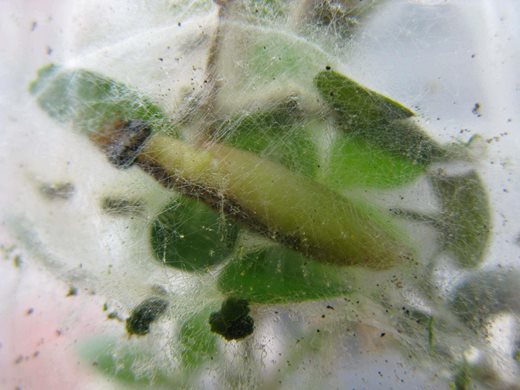 In a changing climate, a possible tide of organisms - some potential pests and diseases - may invade UK gardens. Richard Jones and Chris Prior assess those most likely to pose a risk.
In a changing climate, a possible tide of organisms - some potential pests and diseases - may invade UK gardens. Richard Jones and Chris Prior assess those most likely to pose a risk.
Find out about new insect pests, possible insect arrivals and new diseases (696kB pdf)
Just 100 years ago, a small red beetle with a black head and legs was regarded as a curious and rare oddity by entomologists. It was only known from specimens in the port cities of London and Swansea and was dismissed as a casual import; ignored even by specialist identification guides of the day.
Then in the 1940s it turned up in several places near Guildford. Now red lily beetle (Lilioceris lilii) is one of the best-known and most-often cursed of our garden pests. It did not quite manage to get a solid toehold in Britain until it found that certain something in a Surrey garden, then it was off.
Today, a huge amount of horticultural material is transported around the world, so it is no wonder stowaways occasionally make it here. The most obvious of these organisms are insects and other invertebrates, some of which have the potential to become pests, but possible plant diseases - usually fungi - may also be introduced. The changing climate might have profound effects on these new arrivals as well as those that are indigenous to the UK.
Bugs on the move
 Mainland Europe is only a few miles away; insect migrations are common, with many new species arriving each year. But it is not just that jump across the English Channel or North Sea they have to make - they need to find the right habitat in which to breed, and must be able to survive and thrive once they get here. It may take hundreds of unsuccessful landfalls before a foundling female establishes a community.
Mainland Europe is only a few miles away; insect migrations are common, with many new species arriving each year. But it is not just that jump across the English Channel or North Sea they have to make - they need to find the right habitat in which to breed, and must be able to survive and thrive once they get here. It may take hundreds of unsuccessful landfalls before a foundling female establishes a community.
One controlling factor is that as animals (and plants) get nearer the edge of their natural range, their habitat and ecological requirements become more precise. For instance, European swallowtail butterfly is common in northern France: its caterpillars eat several garden plants, yet in Britain, swallowtails occur only in the Norfolk Broads and eat just one scarce foodplant.
Many elements influence how and why an organism survives in one place and not another. Climate is key: it controls the length of breeding cycles, foraging times, foodplant availability and overwintering success.
Climate and trade
Since the land bridge to Europe was severed by rising sea levels 7,000 years ago, new arrivals to Britain have been kept to a trickle - until recent changes in weather and increasing international plant trade allowed numbers to escalate. Changing climate does not bring more aliens, but it may make our previously hostile environment more favourable for them when they do arrive.
In Britain we have had a series of mild winters, warm summers and dry springs and autumns - at least in southern England where most invaders first make landfall. This has meant many ‘new’ species have become established here in the past 15 years, and they have started to spread. More are set to come. It is not too soon to start considering which likely garden pests, diseases - and helpful species, too - could arrive in Britain in the next 10 to 20 years.
Found a new pest?
If you think you have found a new-to-Britain pest or disease and are an RHS Member, you can RHS Gardening Advice team, or contact the relevant plant health authority.
Send samples of the insect/disease with the host plant in a sealed polythene bag in a stout container. In your covering letter, give details of where the plant is being grown, from where it was obtained and when the problem was first noticed. Please provide a contact telephone number.

